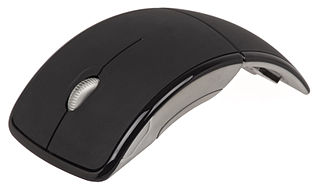 W
WThe Arc Mouse is a family of portable computer mice produced by Microsoft. A mobile mouse, the device has evolved over a number of years, including special editions designed to coordinate with the company's Surface family of computers. All versions of the Arc Mouse are folding and include scrolling capability, and the first version was released in 2008.
 W
WThe Nokia Asha series was a range of low-end feature phones produced and marketed by Nokia. The name "Asha" came from the Hindi word meaning "hope".
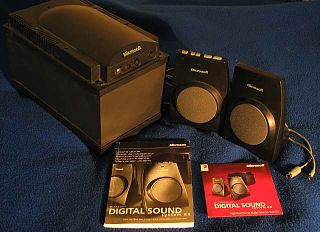 W
WThe Digital Sound System 80, short DSS80, was a three-piece PC audio system co-developed by Microsoft and Philips. It debuted on the 1998 Electronic Entertainment Expo (E³) and is most likely the only speaker system ever released by the Microsoft Corporation. It also remains one of the very few featuring Philips' wOOx subwoofer technology.
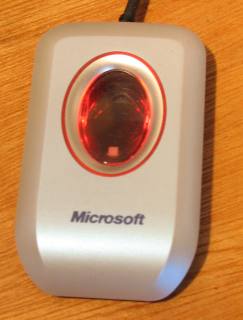 W
WMicrosoft Fingerprint Reader was a device sold by Microsoft, primarily for homes and small businesses. The underlying software providing the biometrics was developed by Digital Persona.
 W
WMicrosoft HoloLens 2 is a pair of mixed reality smartglasses developed and manufactured by Microsoft. It is the successor to the pioneering Microsoft HoloLens. On February 24, 2019 the HoloLens 2 enterprise edition debuted as the first variant of the device, followed by a developer edition that was announced on May 2, 2019. It was subsequently released in limited numbers on November 7, 2019.
 W
WIntelliMouse is a series of computer mice from Microsoft. The IntelliMouse series is credited with a number of innovations, for example, Microsoft was among the first mouse vendors to introduce a scroll wheel, an optical mouse, and dedicated auxiliary buttons on the side of the mouse. They use IntelliPoint drivers and its main competitor through the years has been Logitech.
 W
WKin was a short-lived mobile phone line from Microsoft designed for users of social networking. Microsoft described the phones' target demographic as men and women between ages 15 and 30. It was manufactured by Sharp Corporation and sold through Verizon Wireless.
 W
WKinect is a line of motion sensing input devices produced by Microsoft and first released in 2010. The technology includes a set of hardware originally developed by PrimeSense, incorporating RGB cameras, infrared projectors and detectors that mapped depth through either structured light or time of flight calculations, and a microphone array, along with software and artificial intelligence from Microsoft to allow the device to perform real-time gesture recognition, speech recognition and body skeletal detection for up to four people, among other capabilities. This enables Kinect to be used as a hands-free natural user interface device to interact with a computer system. Kinect is a peripheral that sits atop the user's display similar to a webcam.
 W
WThe LifeCam is a lineup of webcams from Microsoft for PC users marketed since 2006. Various models and series of webcams are designed for either laptops or desktops.
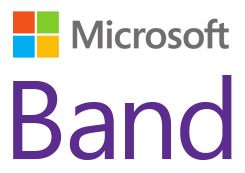 W
WMicrosoft Band was a smart band with smartwatch and activity tracker/fitness tracker features, created and developed by Microsoft. It was announced on October 29, 2014. The Microsoft Band incorporated fitness tracking and health-oriented capabilities and integrated with Windows Phone, iOS, and Android smartphones through a Bluetooth connection. On October 3, 2016, Microsoft stopped sales and development of the line of devices. On May 31, 2019, the Band's companion app was decommissioned, and Microsoft offered a refund for customers who were lifelong active platform users.
 W
WMicrosoft Band 2 was the second-generation smart band with smartwatch features developed by Microsoft. Announced on October 6, 2015, it succeeded the original Microsoft Band and was initially available in the United States, United Kingdom and Canada. It was later also available in Australia through the Sydney flagship store, Microsoft online store, and selected retailers such as JB Hi-Fi and Harvey Norman. Like its predecessor, it incorporates fitness tracking and is compatible with Windows, iOS and Android smartphones via a Bluetooth connection. On October 3, 2016, it was discontinued. On May 31, 2019, the Band's companion app stopped working and Microsoft offered refunds for customers who were still active platform users.
 W
WMicrosoft Display Dock is a display docking station that allows selected Windows 10 mobile devices to connect to a computer monitor, mouse, and keyboard for a desktop PC-like experience. It is also the first device to act as a dock for Windows 10 Mobile's new "Continuum" feature which allows some mobile devices to run native mobile applications as if they were desktop applications, though despite emulating Windows 10 for PCs the software doesn't have most features that come with desktop versions such as running Windows Store applications side-by-side or Win32 applications, and various applications such as Microsoft Messaging + Skype do not run in full screen mode for larger monitors.
 W
WMicrosoft HoloLens, known under development as Project Baraboo, are a pair of mixed reality smartglasses developed and manufactured by Microsoft. HoloLens was the first head-mounted display running the Windows Mixed Reality platform under the Windows 10 computer operating system. The tracking technology used in HoloLens can trace its lineage to Kinect, an add-on for Microsoft's Xbox game console that was introduced in 2010.
 W
WMicrosoft Lumia is a discontinued line of mobile devices that was originally designed and marketed by Nokia and later by Microsoft Mobile. Introduced in November 2011, the line was the result of a long-term partnership between Nokia and Microsoft—as such, Lumia smartphones run on Microsoft software, the Windows Phone operating system; and later the newer Windows 10 Mobile. The Lumia name is derived from the partitive plural form of the Finnish word lumi, meaning "snow".
 W
WThe Microsoft Lumia 435 is a mobile phone developed by Microsoft Mobile Oy for emerging markets. It was introduced in January 2015 to compete with Google's Android One. The phone offers Lumia Denim out of the box and comes pre-installed with Lumia Selfie.
 W
WThe Microsoft Lumia 532 is an entry-level smartphone developed by Microsoft Mobile that runs the Windows Phone 8.1 Operating System and is upgradable to Windows 10 Mobile operating system.
 W
WThe Microsoft Lumia 535 is an entry-level smartphone developed by Microsoft Mobile that runs the Windows Phone 8.1 OS and is upgradable to Windows 10 Mobile. The phone features a 5-inch display. It is equipped with a 5 MP front-facing camera. It is the first Microsoft-branded phone to be used after its acquisition of Nokia's mobile phone business.
 W
WThe Microsoft Lumia 540 is a low-cost smartphone from the Microsoft Lumia family.
 W
WThe Microsoft Lumia 640 and Microsoft Lumia 640 XL are Windows Phone smartphones developed by Microsoft Mobile. Both phones were announced on March 2, 2015, and are the successors to the Nokia Lumia 630 series and the Lumia 1320, respectively. The phones are primarily aimed at developing markets, although they are also available in developed markets as lower-cost options compared to other phones in their classes. The two devices became available in the US and most other markets in June 2015.
 W
WThe Microsoft Lumia 650 is a smartphone developed by Microsoft, officially revealed on February 15, 2016. It is the successor to the Microsoft Lumia 640 and is aimed primarily at business users, with support for Microsoft's business applications as well as security features like device encryption and remote wiping. Due to hardware limitations, it does not support Continuum. The phone was available in both single- and dual-SIM variants and is the most recent model in the Lumia series, with Microsoft discontinuing mobile hardware production the following year.
 W
WMicrosoft Lumia 950 is a smartphone developed by Microsoft, officially revealed on October 6, 2015 alongside the larger Lumia 950 XL. The phone was first released on AT&T in the United States on November 17, 2015, and subsequently made available on the Microsoft Store as well as in other countries.
 W
WThe Microsoft Lumia 950 XL is a smartphone developed by Microsoft, officially revealed on October 6, 2015 and released on November 20, 2015 alongside the smaller Lumia 950. The Lumia 950 XL is the successor to the Nokia Lumia 1520 and is among the first phones to natively run Windows 10 Mobile. The phone is primarily aimed at users desiring a flagship device, in contrast to Microsoft's previous strategy of targeting developing markets with low-end hardware.
 W
WThe Microsoft Mouse is a computer mouse released by Microsoft in 1983. It is the first mouse released by the company, and it was bundled with Microsoft Word, Notepad, and an on-screen teaching tutorial for an initial price of $195.
 W
WNokia 105 (2015) is a Nokia-branded mobile phone developed by Microsoft Mobile. It was released on 3 June 2015.
 W
WNokia 105 is a mobile phone released in 2013 aimed at markets in developing nations marketed and manufactured by Nokia.
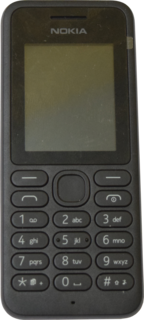 W
WNokia 130 and Nokia 130 Dual Sim are Nokia-branded entry-level feature phones from HMD Global. Originally introduced September 2014 by Microsoft Mobile, the 130 supports one Mini-SIM card and 130 Dual Sim supports two Mini-SIM cards. The cost will be equivalent of 19 Euros when bought unlocked and SIM-free. Its available colors are red, black, and white, depending on region and market.
 W
WThe Nokia 215 is a Nokia dual-band GSM feature phone by Microsoft Mobile. The phone is available in black, white, and bright green.
 W
WThe Nokia 222 is a Nokia-branded dual-band GSM candybar-type phone originally developed by Microsoft Mobile and now sold by HMD Global. The phone is available in black, white.
 W
WThe Nokia Lumia 530 is an entry-level smartphone developed by Microsoft Mobile that runs the Windows Phone 8.1 operating system.
 W
WThe Nokia Lumia 630 is a smartphone developed by Microsoft Mobile that runs Microsoft's Windows Phone 8.1 operating system. It was announced on 2 April 2014, at Microsoft Build 2014 and scheduled to be released in July 2014. It has a Qualcomm Snapdragon 400 SoC with a quad-core processor and Adreno 305 GPU. Additionally, it has a 4.5-inch display and a 5 MP camera. The Lumia 635 is similar but 4G-compatible, lacks a dual-SIM version and comes in a different finish, while the Lumia 636 and 638 are identical, but come with 1 GB of RAM and are currently available only in China and India respectively.
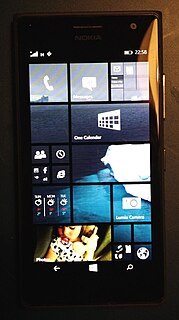 W
WThe Nokia Lumia 735 is a Windows Phone 8.1 smartphone developed by Nokia. Unveiled on 4 September 2014 at IFA Berlin, alongside the Lumia 730, the device is a smartphone with a particular emphasis on "selfies", aided by a 5-megapixel, wide-angle front-facing camera.
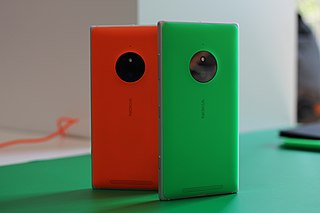 W
WThe Nokia Lumia 830 is a smartphone developed by Microsoft Mobile and branded as "Nokia" that runs Microsoft's Windows Phone 8.1 operating system. It was announced on September 4, 2014 at Internationale Funkausstellung Berlin and released in October 2014. It is a successor to the 2012 Nokia Lumia 820 and marketed as an "affordable flagship".
 W
WThe Nokia Lumia 930 is a high-end smartphone developed by Nokia that runs Microsoft's Windows Phone 8.1 operating system. It was announced on April 2, 2014 at Microsoft Build 2014 and was released in April 2014 as Nokia's flagship. It is the last high-end Nokia-branded Lumia device and succeeded by the Microsoft-branded Lumia 950 and its XL equivalent.
 W
WThe Nokia X family was a range of budget smartphones that was produced and marketed by Microsoft Mobile, originally introduced in February 2014 by Nokia. The smartphones run on the Nokia X platform, a Linux-based operating system which was a fork of Android. Nokia X is also known generally as the Nokia Normandy. It is regarded as Nokia's first Android device during the company's Microsoft partnership and was in the process of selling its mobile phone business to Microsoft, which eventually happened two months later.
 W
WThe Nokia X2 is an entry-level smartphone which was announced and released by Microsoft Mobile on 24 June 2014. It is the successor of the Nokia X, being the first smartphone running version 2.0 of the Android-based Nokia X platform operating system. The Nokia X family of Android phones was discontinued on July 17, 2014.
 W
WNokia PureView is the branding of a combination of technologies used in cameras of Nokia-branded smartphones, and previously, in phones by Microsoft Mobile. PureView was first introduced with Nokia 808 PureView.
 W
WMicrosoft Response Point was an advanced software-based telephone system developed by Microsoft. Response Point, a PBX system targeting small businesses with less than 50 employees, was launched in March 2007, with systems available on the market in the fourth quarter of that year. Response Point is VoIP-based, and uses SIP as its signaling and call setup protocol. Response Point supports voicemail and multi-party calling in addition to two party VoIP calls. Response Point features innovative voice recognition technology to manage calls and voice mail. Voicemail messages can, optionally, be sent to e-mail where they can be retrieved and archived. Response Point voice dialing can work with the Response Point phone directory which is currently limited to 1100 contacts per user. Contacts may be imported from the Windows Address Book or Microsoft Outlook. Response Point automatically detects gateways and phones connected to the network.
 W
WMicrosoft RoundTable was a videoconferencing device with a 360-degree camera that was designed to work with Microsoft Office Communications Server 2007 or Microsoft Office Live Meeting. RoundTable provided remote meeting participants with panoramic video of everyone sitting around the conference table. In addition, RoundTable contained active speaker detection technology that provides high-resolution video of the active speaker in a meeting, and tracked the flow of conversation in real time, switching between different meeting participants as they speak.
 W
WMicrosoft PixelSense is an interactive surface computing platform that allows one or more people to use and touch real-world objects, and share digital content at the same time. The PixelSense platform consists of software and hardware products that combine vision based multitouch PC hardware, 360-degree multiuser application design, and Windows software to create a natural user interface (NUI).
 W
WThe Z-80 SoftCard is a plug-in Apple II processor card developed by Microsoft to turn the computer into a CP/M system based upon the Zilog Z80 central processing unit (CPU). Becoming the most popular CP/M platform and Microsoft's top revenue source for 1980, it was eventually renamed the Microsoft SoftCard, and was succeeded by Microsoft's Premium Softcard IIe for the Apple IIe.